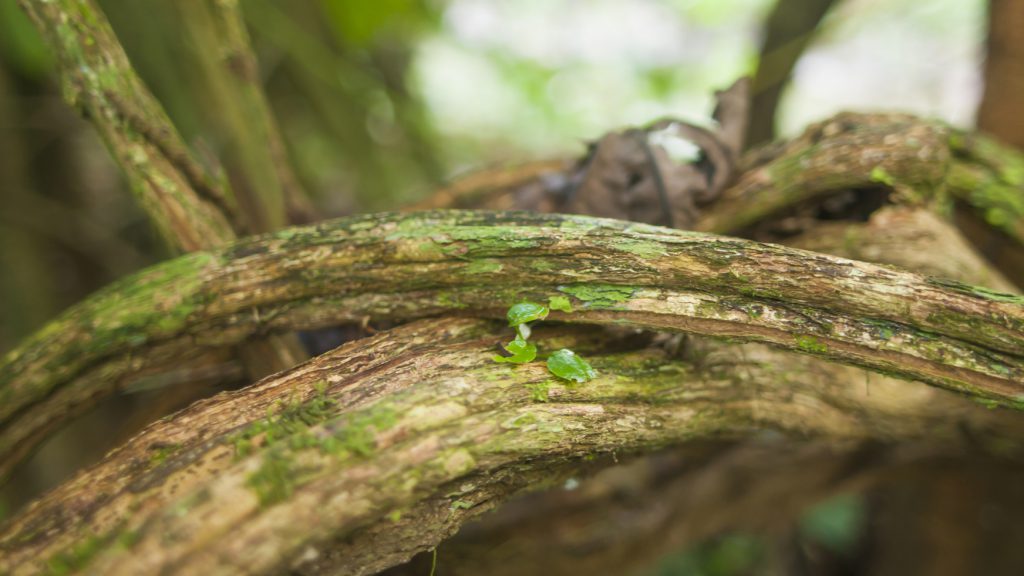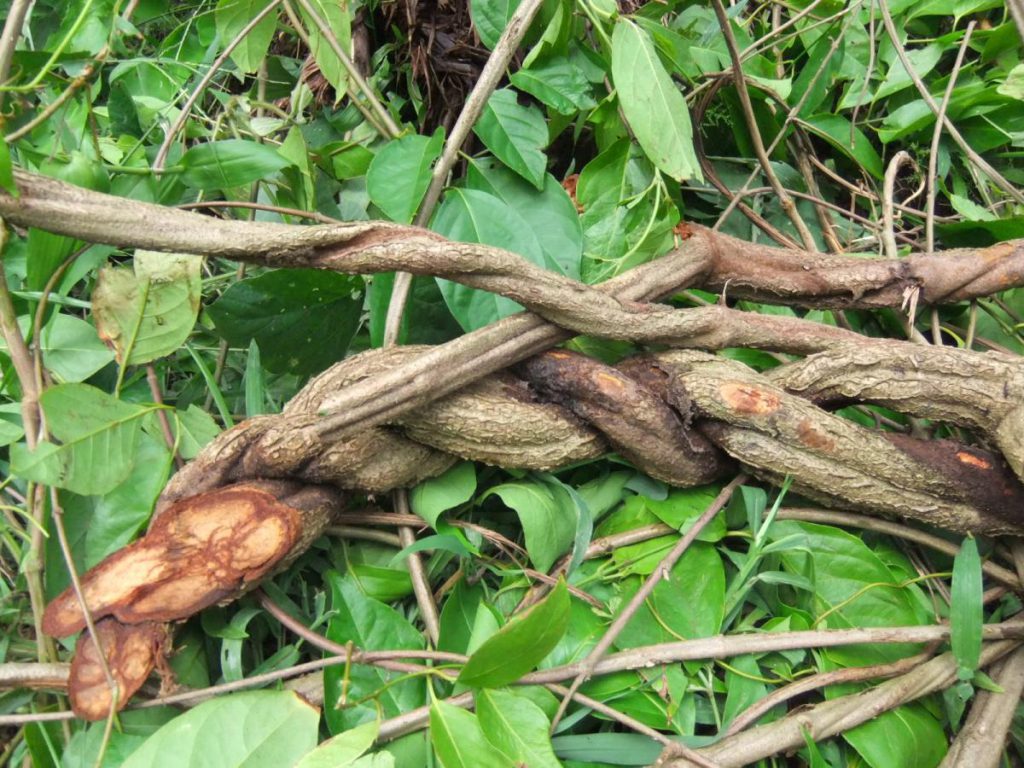Ayahuasca (Banisteriopsis caapi)
It is a large, climbing liana, with long stems, thin and rough bark, with shiny gray or brownish branches of little thickness.
The bark contains alkaloids, tryptamines and beta-carboline derivatives among other molecules: harmine, tetrahydroharmine, harmaline, harmol…
Banisteriopsis caapi is endemic to tropical and subtropical areas of South America, especially in Andean and Amazonian regions of Colombia, Ecuador, Peru, Bolivia, Brazil and Venezuela.

Entheogen, sacred plant.
The use of psychoactive plants began in ancient civilizations, as a vehicle to come into contact with the spiritual world, both in search of knowledge and healing.
This historical characteristic of communication with the energetic or spiritual world led a group of scientists, including Robert Gordon Wasson, in 1973, to propose the term “entheogen”, of Greek origin, which means “God (theos) within”, as a substitute for the previous term “hallucinogenic or psychedelic”.
Other native terms used are “master plants” or “sacred plants.”
(LUNA, 1984; TUPPER, 2002).
Ayahuasca in the Quechua language means “vine of souls” (aya: dead, soul, spirit and waska: rope, liana, vine).
Ayahuasca Analogues
When this psychoactive drink is made with species other than those already mentioned and contains similar active ingredients, it is called “Anahuasca” or “Ayahuasca analog drink.”
This term was coined by Jonathan Ott during the development of his legendary book “Pharmacotheon, entheogenic drugs, their plant sources and the history of it”, taking a giant step in the knowledge and dissemination of these plants.
When preparing the chapter on MAOIs and DMT, Jonathan realized that there were countless plants around the planet that contained these active ingredients, and that therefore hundreds of psychoactive drinks could be made analogous to the original Banisteriopsis ayahuasca. caapi and Psychotria Viridis; about sixty vegetables for each group, mathematically about 4,000 possible variants of the psychoactive drink.
Thus was born his book “Ayahuasca Analogues, an Entheogen from Pangea”, which was published two years later, in 1994, and with which, in addition to downloading a few pages from the voluminous Pharmacotheon, it opened the possibility of a field of virgin research that soon showed its enormous possibilities.

Brazilian tribes that use Ayahuasca
Many Brazilian tribes such as the Ashaninka, and especially several belonging to the Pano linguistic branch (Kaxinawá, Yawanawá, Jaminawá, Marubo, Katukina, among others), traditionally use ayahuasca in their rituals.
The Huni Kuin/Kaxinawá Indians use Nixi pae, ayahuasca made from the species of Psychotria called kawa (nai kawa, pishikawa, batsikawa), and the species of Banisteriopsis called Huni or Nixi pae.
Crop
It is propagated by stem and root cuttings, 5 cm long in a horizontal position. Stem cuttings about 30 cm long and 1 cm in diameter, planted in an oblique position, are also used with good results, similar to yucca. .
Planting is carried out during the beginning of the rainy season, with a distance of 3 m x 3 m. In the initial stages of its development, sporadic pruning is carried out to facilitate harvesting and weed control.
Due to the growing expansion in the consumption of the Ayahuasca drink, it is necessary to develop specific cultivation methods for the species used for its preparation outside the Amazon region, where there is currently a high extraction rate.
